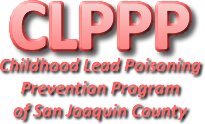Clinical Sign & Symptoms
| BLOOD LEAD LEVEL | POSSIBLE HEALTH EFFECTS |
|---|---|
| less than 10 mcg/dl | Decreased IQ, developmental toxicity (No known lower level for effects) |
| 10 - 44 mcg/dl | Behavior problems (hyperactivity, irritability), overt physical symptoms rare |
| 45 - 69 mcg/dl | Apathy/fatigue, anemia, abdominal symptoms (pain, constipation, nausea/vomiting) |
| 70 - 100 mcg/dl | Nephropathy, colic, encephalopathy |
| > 100 mcg/dl | CNS crisis (cerebral edema, ischemia, seizure, coma, possible death) |
Risk Factors
- Age: under 6 years More time spent on floor
- Increased hand-to-mouth behavior
- High absorption of lead
- Rapid central nervous system development
- Peak risk: ages 1-2 years
- Lives or spends significant amounts of time in pre-1978 housing/buildings with paint in poor condition or undergoing renovation
- Exposure to lead-contaminated dust or soil
- Low income
- Family member who works with lead
- Sibling with elevated blood lead level
- Mother with history of lead exposure/lead poisoning
- Recent immigration/foreign adoptee from region with high environmental lead levels, or spends time outside of the U.S.
- Pica (ingestion of non-food items such as paint chips, dirt, plaster, clay, pottery)
- Family member with hobby exposure (e.g., stained glass, ceramics, firearms, fishing)
- Use of certain imported remedies/supplements/cosmetics
- Use of some types of traditional/imported/handmade dishware
- Consumption of lead-contaminated foods (e.g., Chapulines, some Mexican candy, some imported spices)
- Exposure to lead-contaminated consumer products
- Lives near source of lead air emissions
- Exposure to lead-contaminated water source




 Information
Information